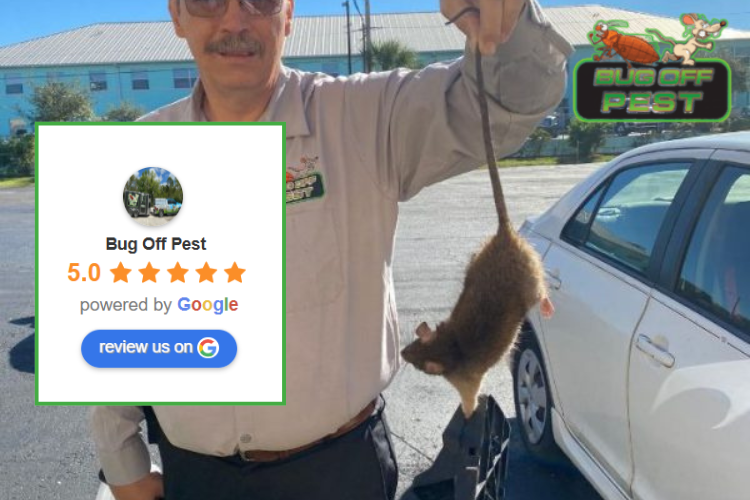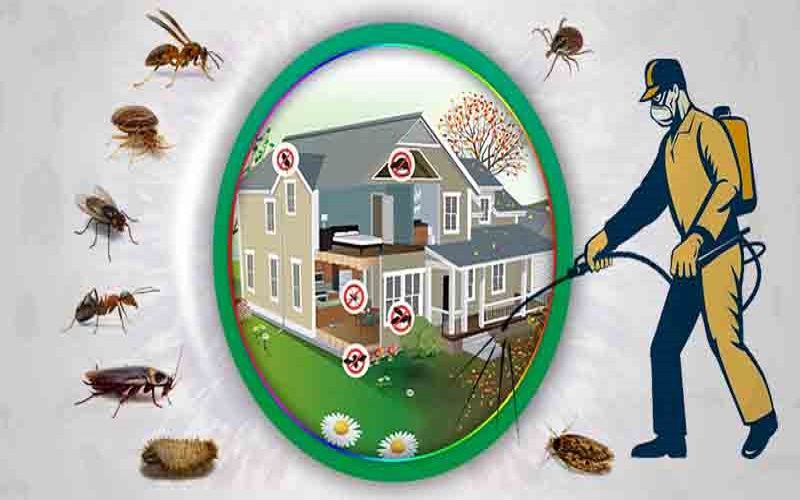Cost-effective and Reliable Exterminator in Port Charlotte for All Your Pest Control Issues
Cost-effective and Reliable Exterminator in Port Charlotte for All Your Pest Control Issues
Blog Article
Learn Regarding the most recent Breakthroughs in Pest Control and How to Execute Efficient Therapy Solutions
In recent years, the area of pest control has actually experienced considerable developments, driven by the demand for efficient and sustainable therapy solutions. Cutting-edge methods such as Integrated Parasite Management (IPM) incorporate eco-friendly methods with cutting-edge innovation, boosting both effectiveness and environmental obligation.
Eco-Friendly Insect Control Options
In recent years, the demand for environment-friendly parasite control alternatives has surged as companies and house owners alike look for sustainable alternatives to typical chemical therapies. This change is driven by expanding ecological understanding and a need to minimize the health risks related to synthetic chemicals.

Environmentally friendly insect control approaches include a series of strategies that focus on the usage of natural substances and techniques. Integrated Insect Management (IPM) is one such approach, incorporating organic, cultural, and mechanical methods to handle pest populaces while decreasing reliance on chemicals (Wildlife removal services). This holistic approach highlights prevention through environment control and the introduction of all-natural killers, consequently promoting a well balanced ecosystem
An additional popular alternative is the use of agricultural pesticides stemmed from plants, which tend to be much less damaging to non-target microorganisms. Products like neem oil and diatomaceous earth have actually gained grip for their effectiveness in managing parasites while positioning marginal dangers to human health and the atmosphere.
In addition, exclusion methods, such as securing access points and preserving sanitation, play a vital duty in green pest administration. By taking on these lasting practices, companies and people can effectively manage insects while advertising a much healthier earth for future generations.
Smart Technology in Insect Administration
Innovation is reshaping the landscape of insect management, with wise innovation becoming a crucial pressure in boosting efficiency and effectiveness - Wildlife removal services. The assimilation of Internet of Things (IoT) gadgets, expert system (AI), and information analytics is transforming how pest control experts come close to problems
Smart catches outfitted with sensing units can discover parasite task in real-time, sending out instant notifies to operators. This allows for timely reactions, reducing damage and reducing the requirement for extensive treatments. Additionally, AI formulas assess historic data to anticipate insect behavior, enabling aggressive interventions based on ecological problems and invasion patterns.
Drones and automatic vehicles are additionally playing a substantial duty in parasite administration, offering airborne evaluations of large areas, determining hotspots, and even dispersing targeted treatments. These technologies not just enhance procedures but additionally improve safety by restricting human exposure to possibly harmful chemicals.
Moreover, mobile applications empower customers to keep track of pest task and gain access to expert recommendations, fostering a joint approach to pest monitoring. On the whole, the adoption of wise technology is setting a brand-new criterion in insect control, stressing data-driven decisions and lasting practices that inevitably benefit both homeowners and experts alike.
Integrated Pest Monitoring Approaches
Integrated Bug Monitoring (IPM) utilizes an all natural approach to pest control, combining different methods to efficiently handle pest populaces while lessening risks to human health and the setting. IPM focuses on recognizing the pest life cycle, their all-natural enemies, and the ecological community in which they flourish.
One of the fundamental parts of IPM is monitoring pest populations via routine examinations and information collection. This allows for the identification of insect limits, identifying when intervention is required. Cultural practices, such as crop habitat, sanitation, and rotation manipulation, are vital in lowering pest occurrence and advertising plant health.
Mechanical controls, consisting of catches and obstacles, are likewise essential in IPM. These techniques can physically remove or hinder bugs without using chemicals. When essential, the sensible application of chemical controls is used, concentrating on targeted therapies that minimize ecological effect.
Education and cooperation among stakeholders, including farmers, insect control experts, and the area, are important for the successful execution of IPM approaches. By focusing on sustainable methods, IPM not only addresses pest issues yet likewise fosters a much healthier environment.
Biological Control Approaches
Many biological control approaches are significantly acknowledged for their performance in taking care of bug populations while advertising ecological equilibrium. These methods harness natural killers, parasites, and pathogens to minimize pest numbers without relying on artificial chemicals. As an example, the introduction of ladybugs can pop over here properly control aphid populaces, while nematodes target soil-dwelling insect larvae.
In addition, making use of microbial pesticides, such as Bacillus thuringiensis (Bt), provides an eco-friendly choice for taking care of caterpillar insects. These items particularly target pest varieties, reducing damage to useful insects and pollinators. In addition, conservation biological control stresses boosting habitats for all-natural enemies, such as birds and helpful pests, thereby motivating their visibility in farming systems.
Study continues to disclose innovative methods within this area, such as using scents to disrupt pest mating patterns or the growth of biocontrol representatives through genetic engineering. Executing these approaches can cause lasting parasite monitoring methods that mitigate the dependence on chemical treatments, ultimately fostering healthier ecological communities. As understanding of these techniques grows, they are ending up being indispensable parts of integrated pest management (IPM) techniques, providing a balance between reliable parasite control and ecological stewardship.
DIY Insect Control Solutions
As house owners seek reliable ways to take on pest issues, do it yourself bug control remedies have actually obtained appeal for their availability and cost-effectiveness. These techniques empower people to deal with infestations making use of easily available products and methods, typically without the demand for specialist intervention.

Furthermore, preserving proper cleanliness and routine evaluations can prevent pest access and nesting (Wildlife removal services). Basic methods, such as sealing fractures, removing food resources, and decluttering, can dramatically lessen bug populations. Traps, both homemade and commercially readily available, can likewise provide effective remedies for tracking and controlling particular pests like bugs or rats

Verdict
The combination of environment-friendly insect control options, clever innovation, and innovative administration techniques presents a thorough technique to effective parasite administration. By accepting Integrated Bug find more Management (IPM) and making use of biological control methods, together with DIY remedies, sustainable and liable pest yellow jacket extermination control can be attained. These developments not just improve the effectiveness of parasite administration practices however also add to a healthier environment. Executing these approaches promotes a well balanced ecological community while efficiently addressing pest populations.
Eco-friendly insect control techniques include an array of strategies that prioritize the use of natural compounds and methods. Integrated Parasite Monitoring (IPM) is one such method, integrating biological, cultural, and mechanical techniques to handle bug populaces while minimizing dependence on chemicals. As recognition of these strategies expands, they are coming to be integral components of integrated bug monitoring (IPM) approaches, supplying an equilibrium in between efficient bug control and ecological stewardship.
The integration of environment-friendly bug control choices, wise innovation, and ingenious management strategies provides a thorough technique to efficient insect management. By embracing Integrated Parasite Monitoring (IPM) and utilizing organic control approaches, together with DIY solutions, sustainable and liable parasite control can be attained.
Report this page